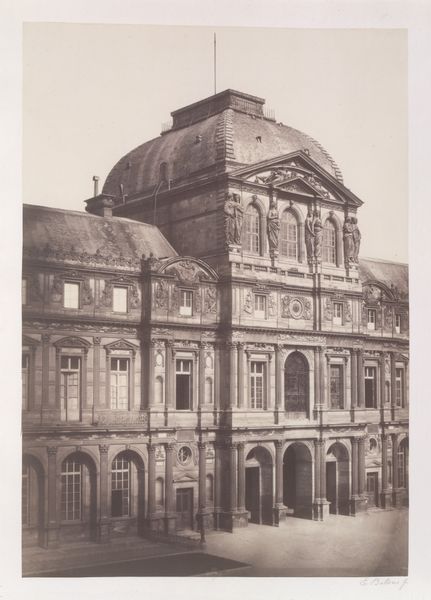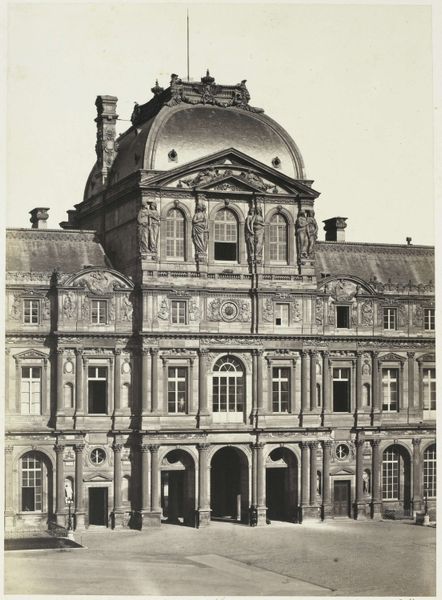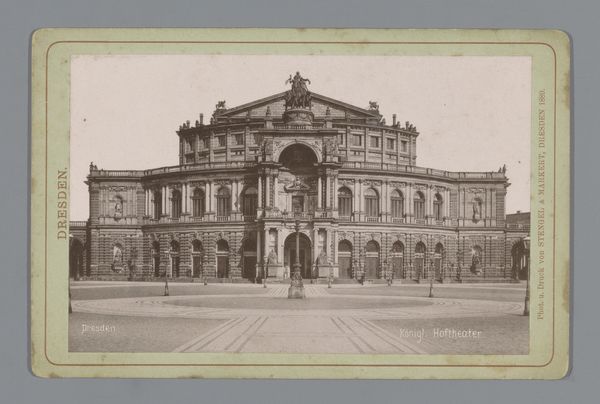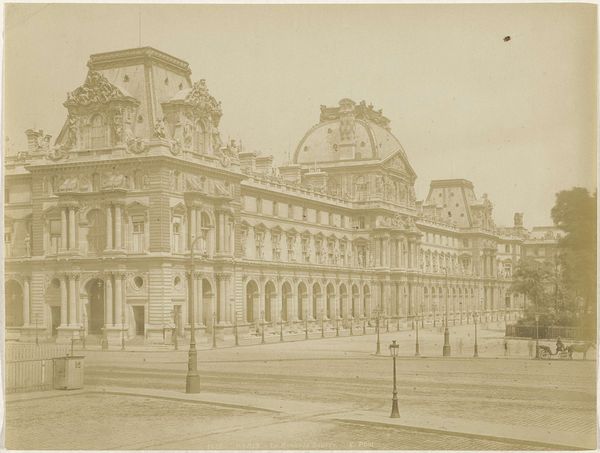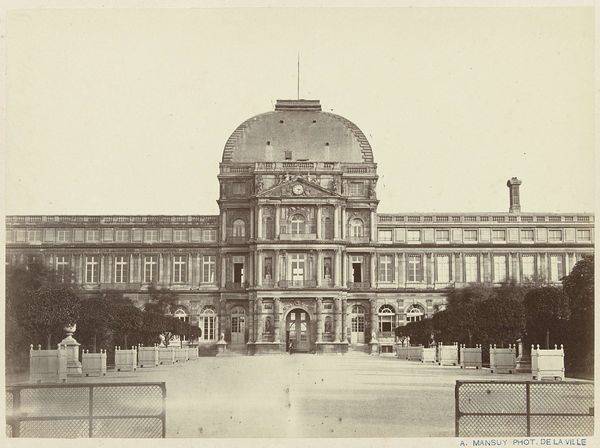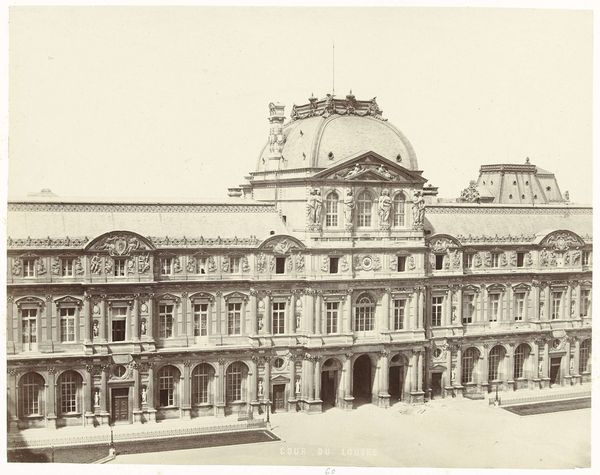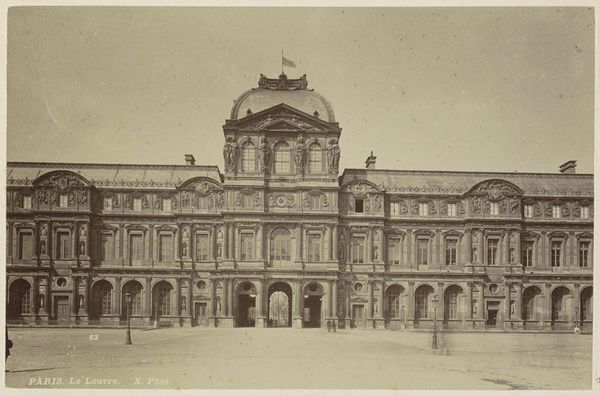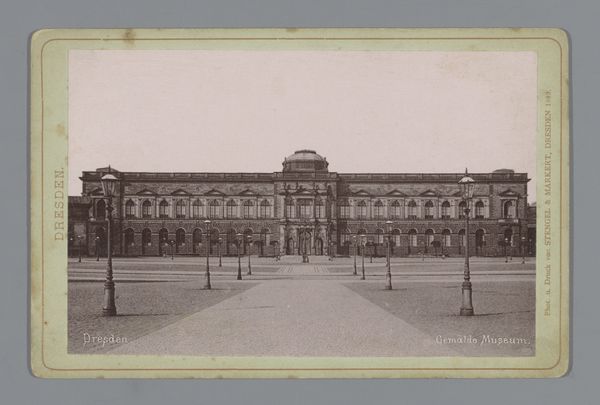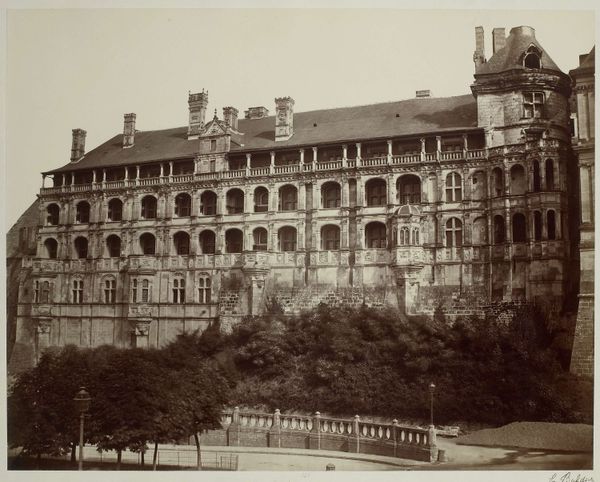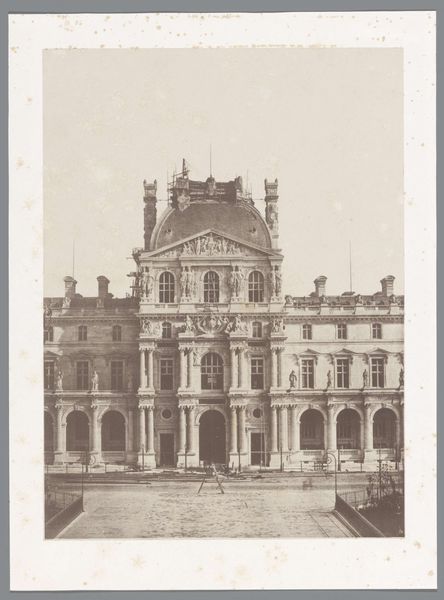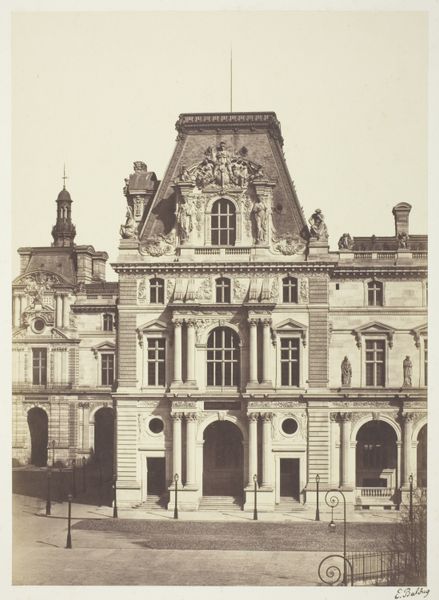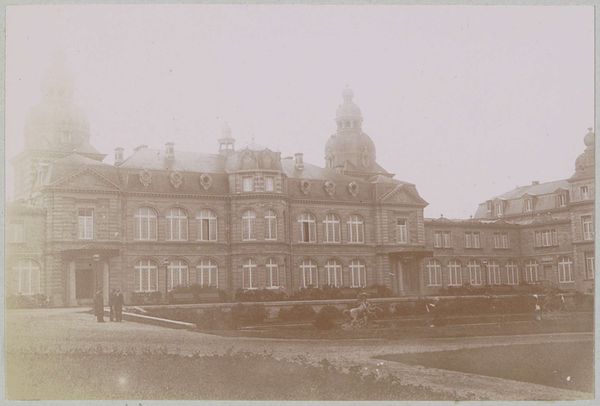
silver, print, etching, paper, photography, pencil, architecture
#
16_19th-century
#
silver
#
neoclassicism
# print
#
etching
#
landscape
#
paper
#
photography
#
pencil
#
monochrome photography
#
19th century
#
cityscape
#
architecture
Dimensions: 44.8 × 57.7 cm (image/paper); 54.1 × 68.9 cm (mount)
Copyright: Public Domain
Editor: So, this photograph, "Le Louvre: Pavillon de l'Horloge" by Édouard Baldus, likely taken sometime between 1855 and 1878, captures a grand architectural view. It feels so static, almost like a stage set. What do you see in this piece beyond the architecture itself? Curator: The Louvre isn’t merely stone and mortar, but a loaded signifier. Notice how Baldus frames the Pavilion; the symmetry, the classical allusions in the sculptures… It's all designed to project power, permanence, and a specific narrative of French identity, drawing on the cultural memory of the neoclassical. What feelings arise for you looking at that central clock? Editor: It's almost like time is frozen; a captured moment, which is ironic considering it’s a clock tower. The sharpness of detail feels very deliberate. Curator: Exactly! Consider photography’s rise during this period. It allowed for wider dissemination of these carefully constructed images. They weren't just documenting reality, but actively shaping perceptions, especially in relation to progress and national pride. How might this image influence someone’s understanding of Paris, or even France? Editor: I guess it’s presenting an ideal, a timeless strength... a very curated reality! So it’s not just a picture of a building. It's communicating values, reinforcing ideas through a visual language. Curator: Precisely. Baldus is utilizing the Louvre, this incredibly dense symbol, as a means of conveying much larger cultural ideas. That clock reminds us how even time is subject to control. What do you make of that now? Editor: Now I’m seeing how even a seemingly straightforward photograph like this can be a complex statement about history, power, and cultural identity. I definitely will view images of buildings differently going forward!
Comments
No comments
Be the first to comment and join the conversation on the ultimate creative platform.
